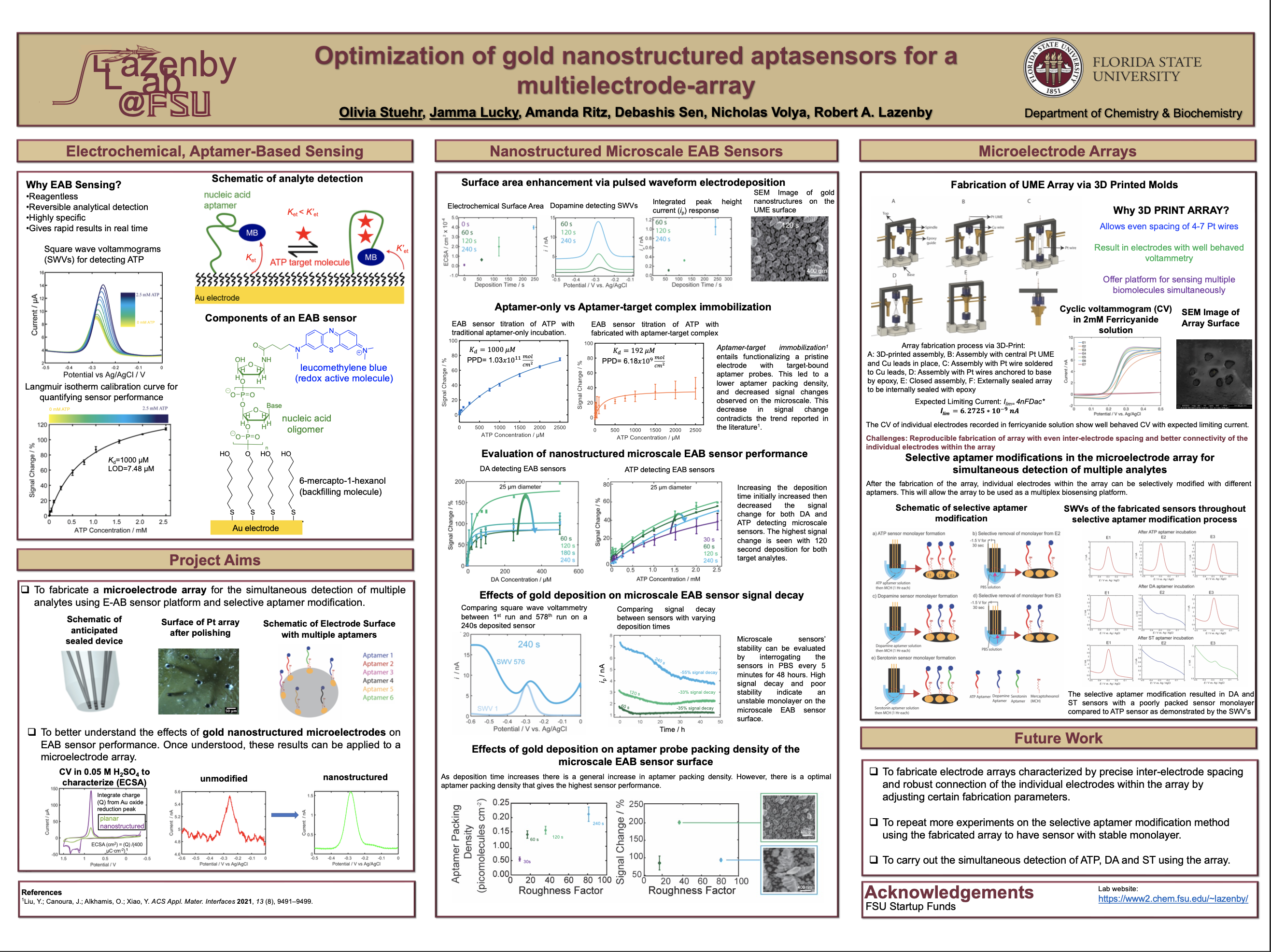Research Symposium
23rd annual Undergraduate Research Symposium, April 6, 2023
Jamma Lucky Poster Session 2: 1:30 pm - 2:30 pm/ Poster #276

BIO
I am a fourth-year senior from Atlanta, Georgia with a burning passion for chemistry and knowledge. I am a proud brother of Alpha Chi Sigma, a professional chemistry fraternity as well as a student researcher for Dr. Robert Lazenby focusing on Electrochemistry. I will be graduating in August 2023 upon which I plan to pursue higher education and a career in chemical research.
Optimization of gold nanostructured aptasensors for a multielectrode-array
Authors: Jamma Lucky, Robert LazenbyStudent Major: Biochemistry
Mentor: Robert Lazenby
Mentor's Department: Chemistry Mentor's College: Florida State University Co-Presenters: Olivia Stuehr
Abstract
Electrochemical, aptamer-based (EAB) sensors are an emerging class of biosensors with promising applications for point-of-care (POC) devices and have been used to detect and quantify a wide range of biological and chemical analytes with high specificity. EAB sensors can be fabricated on numerous electrode surfaces such as gold. There are various methods of increasing the microscopic surface area and this is typically done to accommodate a greater number of aptamer probes on the surface to enhance the current response, which is particularly important for miniaturized sensors made from a 25-µm diameter wire. Previous attempts to increase the surface area have not thoroughly assessed the effects of gold morphology on the performance of EAB sensors on miniaturized sensors. Here, we used different electrodeposition conditions to deposit gold nanostructures on the microelectrode surface to increase the microscopic surface area, control surface morphology, and explore the resulting effects on EAB sensor performance. In order to evaluate performance, we fabricated sensors using aptamers specific to target analytes adenosine triphosphate (ATP) and dopamine (DA), then interrogated them using square wave voltammetry, and cyclic voltammetry. We can then apply these conditions and results to optimize sensing performance on a microelectrode array. The arrays are created using a custom-made 3D printed device which allows for the fabrication of closely placed microelectrodes. This creates a platform for microscale aptasensors which can be used for the simultaneous detection of multiple analytes.
Keywords: Electrochemistry, Array, Biosensor


